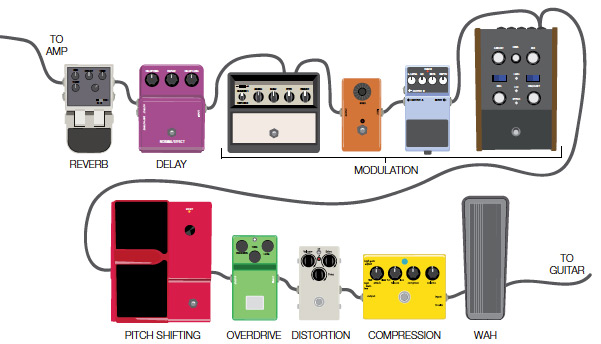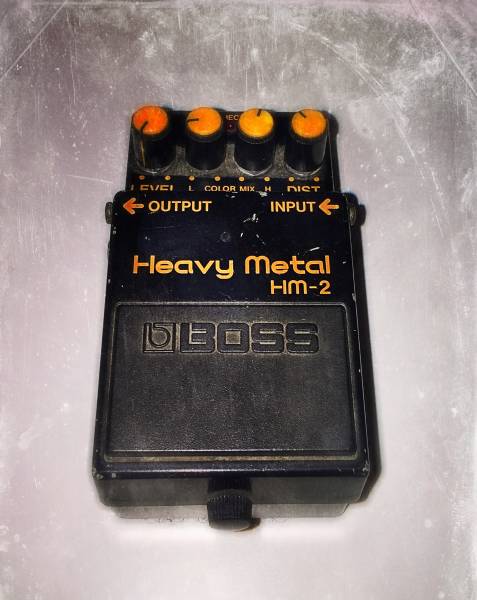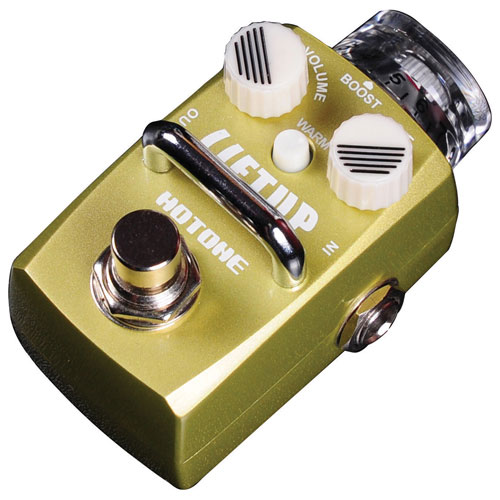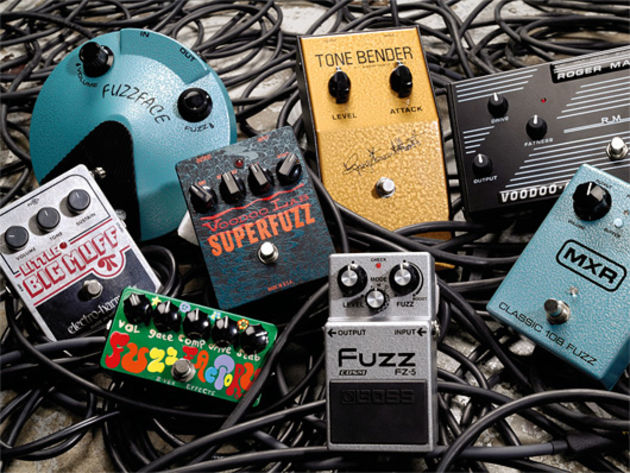 Musical gear is an incredibly interesting if not perplexing world. On the one hand, we have a new breed of guitar amplifiers with dozens of built in effects and hundreds of ways to configure them. This would seemingly mean that the typical guitar player need look no further than their amplifier for a veritable world of sounds. On the other hand, both the big players like BOSS/Roland and smaller boutique producers are outputting more effects pedals than ever before.
Musical gear is an incredibly interesting if not perplexing world. On the one hand, we have a new breed of guitar amplifiers with dozens of built in effects and hundreds of ways to configure them. This would seemingly mean that the typical guitar player need look no further than their amplifier for a veritable world of sounds. On the other hand, both the big players like BOSS/Roland and smaller boutique producers are outputting more effects pedals than ever before.
My primary amplifier is a Marshall DSL head and cabinet and for the vast majority of stuff that I play, I love the natural tube distortion that it provides but beyond that, it is limiting. As a result I have a pedalboard that features a variety of different guitar effects pedals (also commonly called stompboxes) that see different levels of use depending on what they do and how often I require it. What I will do here is run down the different types of effects and briefly discuss what value they may have for your playing and sound.

You can basically break guitar effects pedals down into a few different categories. Pedals that Boost, Modulate, Echo/Delay, Filter/Model, or the all inclusive world of the Multi-Effects pedal. As a whole, essentially what you do is to plug your guitar cable directly into the pedal and then run a second cable from your pedal into your amplifier. Easy breezy. If you have more than one pedal you simply daisy chain them from one output to the next input. Play as normal and when you want to activate the effect, simply step on the pedal’s footpad and viola, instant effect. Just keep in mind that despite what I may say or imply here, it is never exactly cut and dry. Different effects often overlap with others in what they are capable of doing. Yet I will try and lay it out in a straightforward manner.

It’s fair to say that if a guitarist only has one guitar effects pedal at his disposal, it is likely some kind of boost, fuzz, overdrive, or distortion pedal. When I got my first “real” guitar and amplifier, I had one pedal. That pedal was a BOSS Heavy Metal pedal. In the 1980s, BOSS made the now classic HM-2, Heavy Metal Pedal. It was discontinued in 1991 and has become an almost mythological stompbox that is fetching a couple of hundred dollars used on ebay. It is famed for its extreme punch and is claimed to be the “secret ingredient” in the famed Gothenburg sound made famous by bands like Entombed, Grave, and At the Gates. Now, while all of those different types of “boost” pedals take your signal and kick it up, they do it in different ways and for different reasons.
BOOST PEDALS
The Booster pedal is basically a preamp that sits in the signal chain before your amplifier so that when it is engaged, it kicks the signal up and sends it into the amp. While it can add a bit of overdrive, generally by making the tubes work more, it is
still what amounts to a clean boost. This is generally used to add more volume to
 your solos or adding some harmonic depth to picking.
your solos or adding some harmonic depth to picking.
OVERDRIVE
As always, the style of music that you play, or want to play if you’re just starting out, will determine which form of distortion appeals to you. Both overdrive and distortion add grit and crunch to your signal; the difference really lies in how much they add. Overdrive is subtler than distortion, for the most part, or at least not quite as intense. Most classic rock and even modern rock that isn’t “heavy metal” is an example of an overdrive pedal. AC/DC and Led Zeppelin are good examples of an overdriven sound and would also likely be the effect of choice for “retro” bands like The Strokes. You can get varying amounts of overdrive from simply pushing a vacuum tube amp but I personally find that it is more manageable and consistent if I use a pedal for most songs that I need overdrive on. This is not to say that you can’t do both, of course. A simple way to explain the tone might be to suggest that of overdrive, distortion, and fuzz pedals, overdrive provides a warmer and more natural addition to the signal that allows it to be used in other genres as well like blues and country.
DISTORTION
 Distortion is the heavier, dirtier cousin that really loves to growl. Both overdrive and distortion effects boost the gain on your signal and alter the soundwave which is what produces the mud. Where I find the distortion pedal to be particularly useful is in those situations where I can’t up the gain enough on my amplifier because of volume concerns. In a rehearsal space it isn’t a problem but for bedroom practice the volume I need to really work the tubes is simply too loud so a distortion pedal mimics the distortion I would get at a much higher volume. A good distortion pedal will allow you to emulate a full Marshall stack or Mesa Boogie sound at low volume while thickening the sound at higher volumes and potentially offering more dynamic controls through the pedal’s EQ settings.
Distortion is the heavier, dirtier cousin that really loves to growl. Both overdrive and distortion effects boost the gain on your signal and alter the soundwave which is what produces the mud. Where I find the distortion pedal to be particularly useful is in those situations where I can’t up the gain enough on my amplifier because of volume concerns. In a rehearsal space it isn’t a problem but for bedroom practice the volume I need to really work the tubes is simply too loud so a distortion pedal mimics the distortion I would get at a much higher volume. A good distortion pedal will allow you to emulate a full Marshall stack or Mesa Boogie sound at low volume while thickening the sound at higher volumes and potentially offering more dynamic controls through the pedal’s EQ settings.
There is also a significant variance in the types of distortion provided. As an example, by my count BOSS currently produces at least 7 “distortion” pedals (this does not include those branded as overdrive or fuzz pedals) that range from the grindcore sound to blues rock. This is the one pedal realm that demands you to try before you by in order to ensure that you are meeting your aural requirements. You really should always try before you by but perhaps the other pedal categories simply ask nicely. If it’s metal, it’s likely running through some kind of distortion pedal.
FUZZ

And speaking of “mud”, the Fuzz pedal would fall in here as well. Think Queens of the Stone Age for that classic sound in a modern band. The fuzz distortion is warm and full as it provides meat and resonance to the guitar’s signal. I also personally find the fuzz sound the most difficult to dial in as it seems, to me at least, to be the one with the most variability within one pedal itself. It is easy to go past the warm fuzz and into that “wall of fuzz” that often cannibalizes the intricacies of what you are playing. It also can sound the most artificial of the distortions, to my ears at least, but when you do dial it in where you want, provides a seriously pleasing tone that sounds like Hendrix or Clapton from his Cream days. It seems a lot of current rock, hard rock, and “indie” bands rely on Fuzz more than overdrive and distortion for their sound. Examples of this are The Black Keys and Alabama Shakes.
It really is a subjective matter and as always, drop into a Best Buy and give some of these different pedals a spin to see if it will ultimately achieve what you are looking for. The next pedal primer will look at pedals that modulate. These include chorus, phaser, wah, and flanger among others.




Boss pedals are just the best for quality, every single one I’ve ever purchased is still in prime working condition…
Gotta love that Big Muff Pi though!!!
Comments are closed.